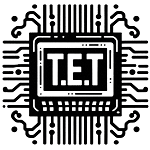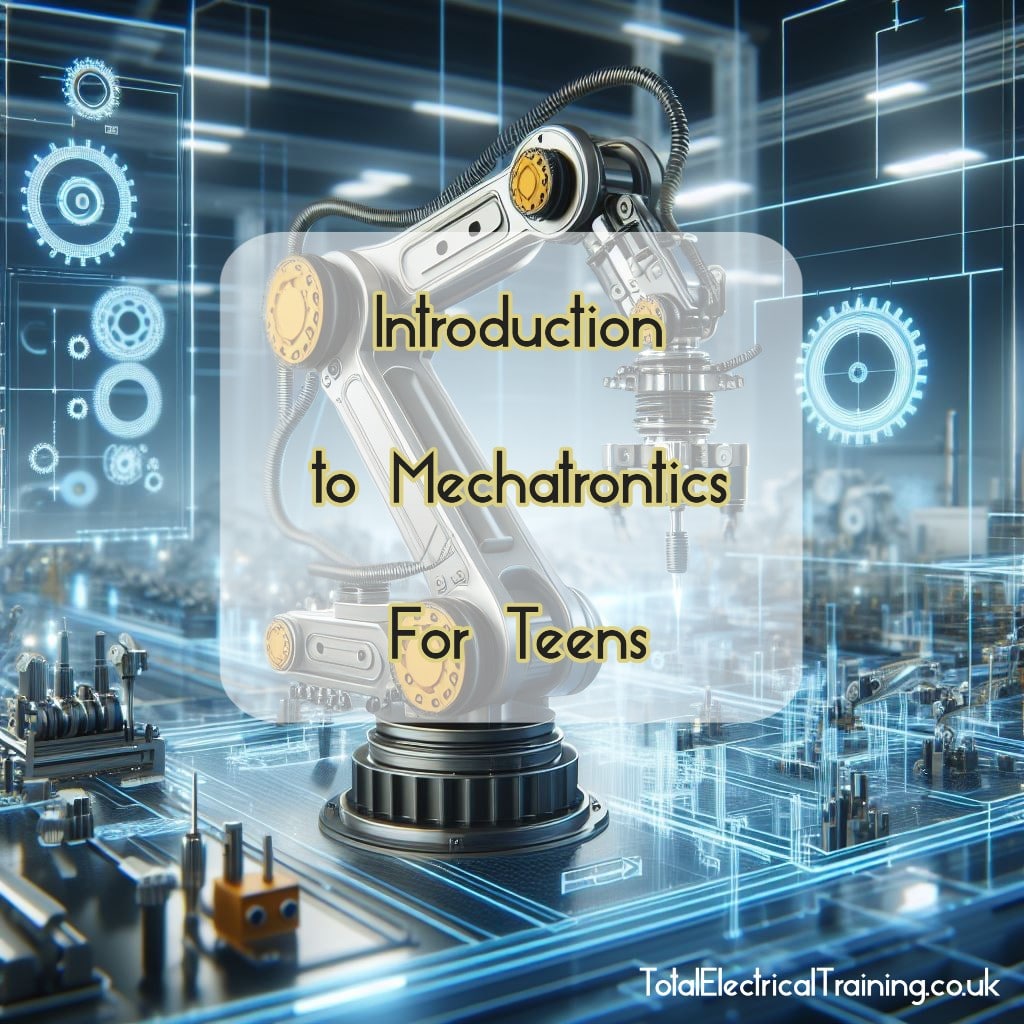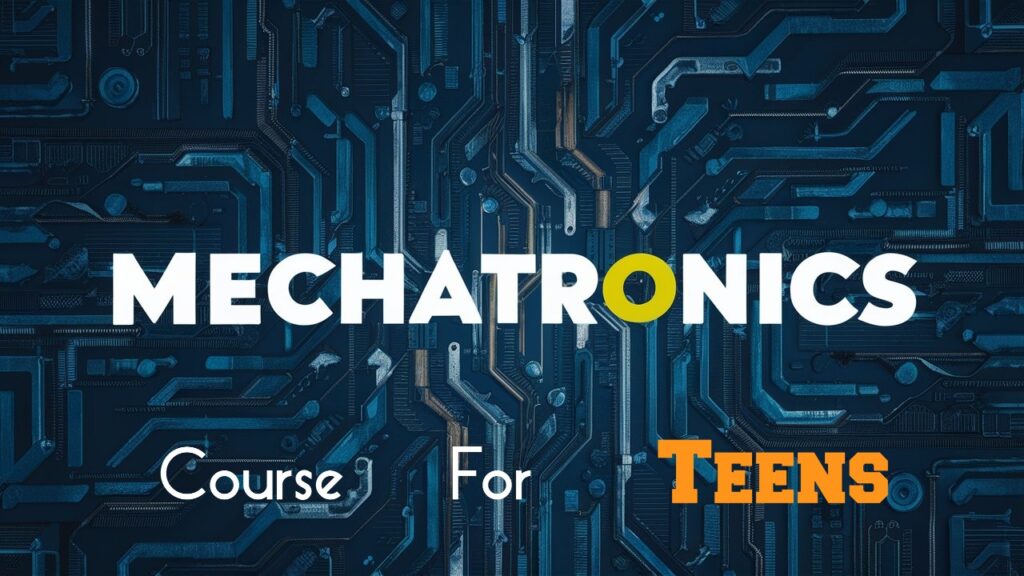Click the simple table below to view the FULL LENGTH Mechatronics Course for Teens OVERVIEW
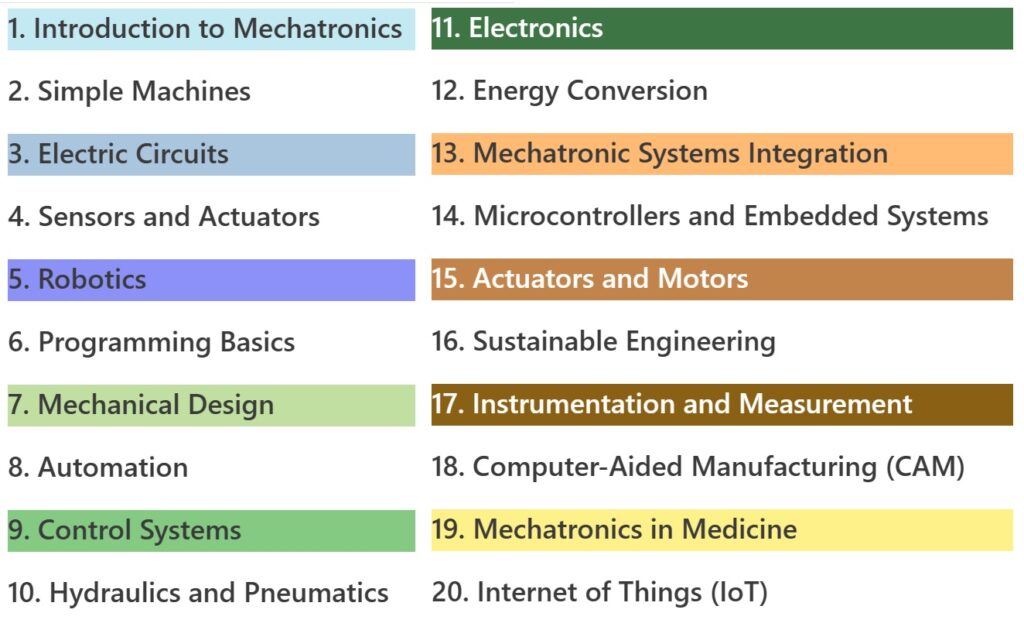
DISCLAIMER – This course is put together from various sources. Although the content of the course, and the questions are written and designed by Total Electrical Training, however none of the video tutorials in this course are made by us, or anyone affiliated with us. Although we’ve compiled the videos to enhance your learning of the relevant lesson, this does not mean Total Electrical Training is validating or promoting the creators of those videos or the content of their channels.
This Lessons Contains: READING, VIDEOS, QUESTIONS, and A HANDS ON PROJECT.
Understanding the Fundamentals of Electronics
Electronics play a pivotal role in modern life, powering everything from smartphones to medical devices. At the heart of these systems lie several key components, each serving a unique function that contributes to the overall operation of electronic devices. This article explores the basic components of electronics, how transistors amplify signals, the role of capacitors, and the workings of a radio receiver.
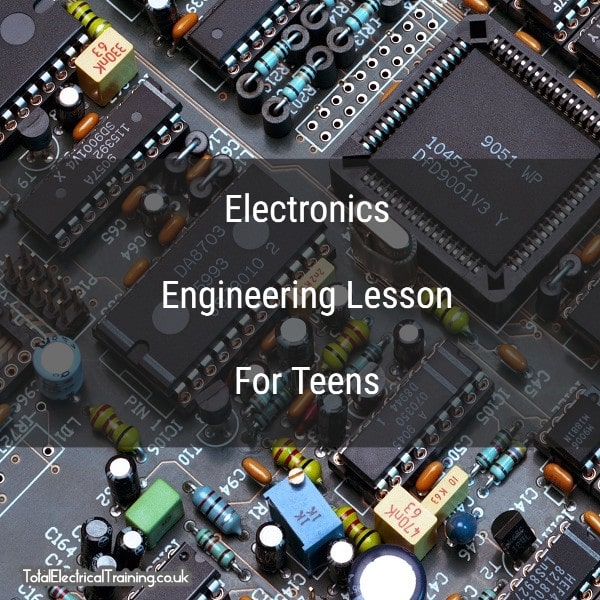
Basic Components of Electronic Devices
Electronic devices are composed of several fundamental components:
- Resistors: These components limit the flow of electric current, protecting other components from damage.
- Capacitors: Capacitors store and release electrical energy, playing crucial roles in filtering and timing applications.
- Inductors: Inductors store energy in a magnetic field when electrical current passes through them, commonly used in filters and transformers.
- Diodes: Diodes allow current to flow in one direction only, used for rectification in power supplies.
- Transistors: These are semiconductor devices used to amplify or switch electronic signals and electrical power.
- Integrated Circuits (ICs): ICs are small chips that can function as amplifiers, oscillators, timers, microprocessors, or even computer memory.
How Transistors Amplify Signals
Transistors, particularly bipolar junction transistors (BJTs) and field-effect transistors (FETs), are fundamental in amplifying signals. A transistor works as an amplifier by controlling a large current flowing through the device with a smaller current or voltage input. In a BJT, a small input current at the base terminal controls a larger current between the collector and emitter terminals. Similarly, in a FET, a voltage at the gate terminal controls the current flow between the drain and source terminals. This capability allows transistors to boost weak signals in devices such as radios, televisions, and audio equipment.
The Role of Capacitors in Electronics
Capacitors serve multiple essential functions in electronic circuits:
- Energy Storage: Capacitors can store electrical energy and release it when needed, providing a power supply to circuits during brief interruptions.
- Filtering: In power supplies, capacitors smooth out fluctuations in voltage by filtering out noise and providing a stable output.
- Timing: In conjunction with resistors, capacitors can create time delays in circuits, which are crucial in timing applications.
- Coupling and Decoupling: Capacitors can pass alternating current (AC) signals between stages of an amplifier while blocking direct current (DC), ensuring that DC biasing conditions remain stable.
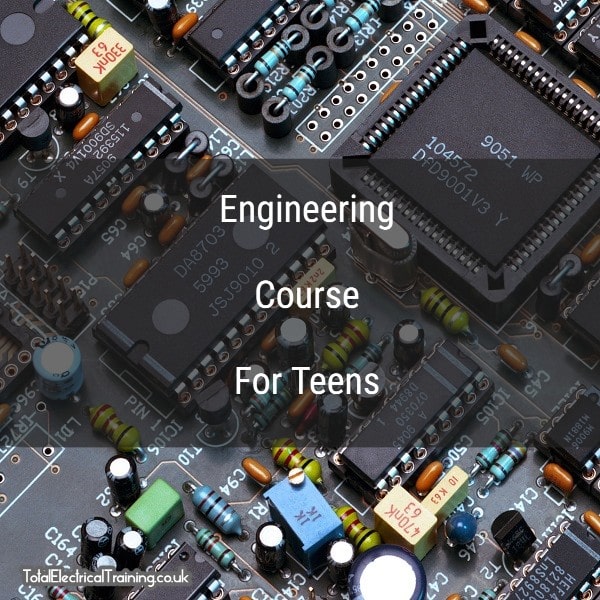
How a Radio Receiver Works
A radio receiver is a complex device that captures radio waves transmitted through the air and converts them into audible sound. Here’s a simplified explanation of the process:
- Antenna: The antenna picks up radio waves from the air.
- Tuning Circuit: The tuning circuit selects the desired frequency of the radio signal. This is often achieved using a variable capacitor or inductor to resonate at the desired frequency.
- Amplifier: The selected signal is amplified by one or more transistor amplifiers, making it strong enough for further processing.
- Detector/Demodulator: The amplified signal is then demodulated, which involves extracting the audio information from the radio frequency carrier wave. This is typically done using a diode or other demodulation circuits.
- Audio Amplifier: The extracted audio signal is further amplified to a level that can drive a speaker or headphones.
- Speaker: The amplified audio signal is converted into sound waves by the speaker, making the audio information audible to the listener.
In summary, electronics rely on a range of components to function correctly. Transistors amplify signals, capacitors manage energy and stabilize circuits, and radio receivers convert radio waves into sound. Understanding these basics provides a foundation for exploring more advanced electronic concepts and applications.
Hands on Project for this Lesson – Build a Radio
Questions
- What are the basic components of electronic devices?
- How do transistors amplify signals?
- What is the role of capacitors in electronics?
- How does a radio receiver work?
- Bonus: Explore the evolution of electronics from vacuum tubes to semiconductors.
Ready to take a dive into Electrical Engineering to get a head start on College or University, or simply expand your DIY knowledge?
Check out our meticulously designed course in Electrical/Electronic Engineering for all walks of life, from any country. Delivered by Professor F. Tavassoli.
Buy me a Coffee
If this page has been extremely helpful, you can always buy me a digital coffee to express your thanks for the information I’ve put together to help eager minds excel in their knowledge, learning and success.
Your kind donation makes it possible for me to continue creating amazing content, courses and fulfil my dream of keeping the majority of what I make FREE and Ad FREE!!!
Thank you from the bottom of my heart, and abundant blessings to you!
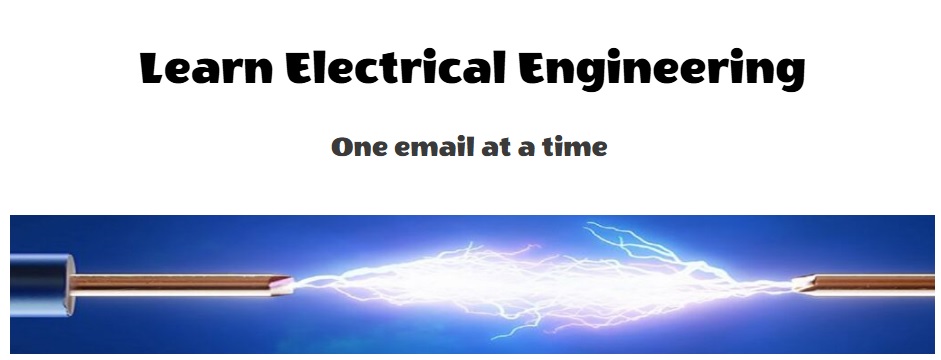
Join students and professionals
from across the world increasing their knowledge of Electrical Engineering.
One email at a time
We never send spam or give your information to anyone, Privacy Policy here.
DISCLAIMER – This course is put together from various sources. Although the content of the course, and the questions are written and designed by Total Electrical Training, however none of the video tutorials in this course are made by us, or anyone affiliated with us. Although we’ve compiled the videos to enhance your learning of the relevant lesson, this does not mean Total Electrical Training is validating or promoting the creators of those videos or the content of their channels.
